Yesterday morning there was ample evidence of serious social tension among the Antelope Island coyotes.
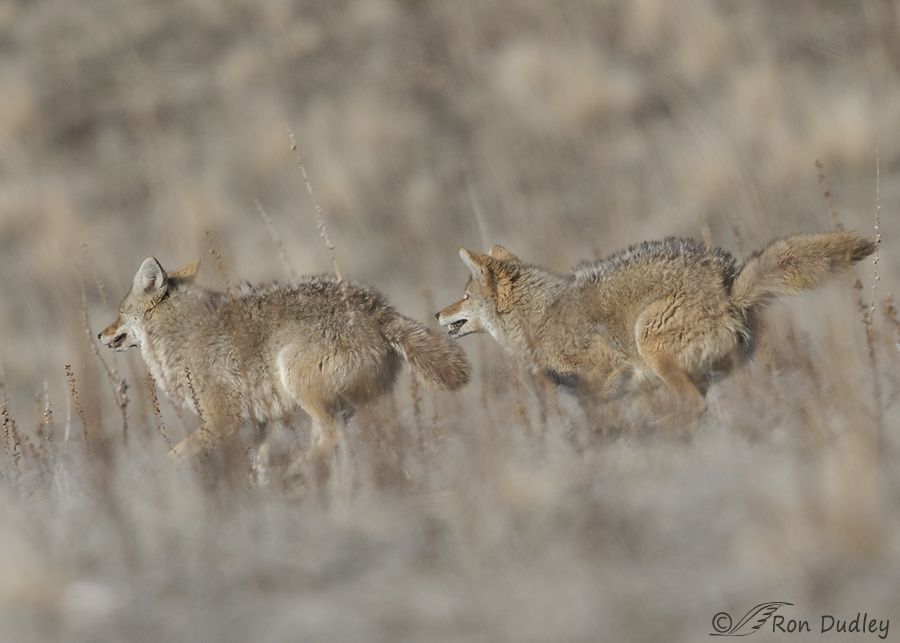
As I made a turn in the road I encountered this pair of coyotes chasing off a lone coyote out of frame to the left.
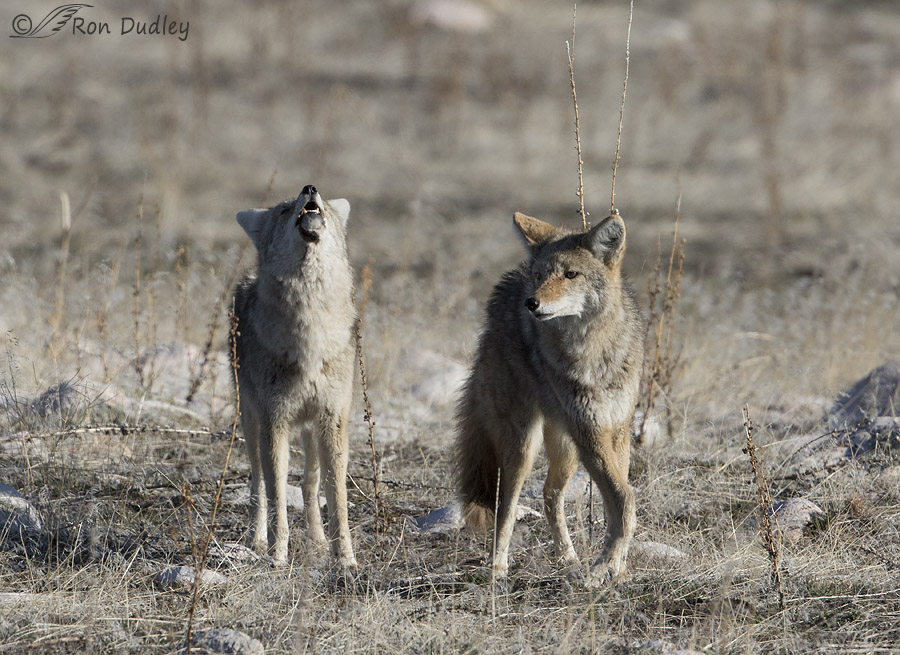
Soon they abandoned the chase and crossed the road into poor light. The pair bond was strong between these two as there was lots of touchy-feely contact between them during this entire episode. Here one of them begins to howl as the other looks in the direction of the third coyote off in the distance. Notice the angle and position of the right-front leg of the animal on the right. That leg had obviously been severely injured in the past as evidenced by its deformed shape and swelling.
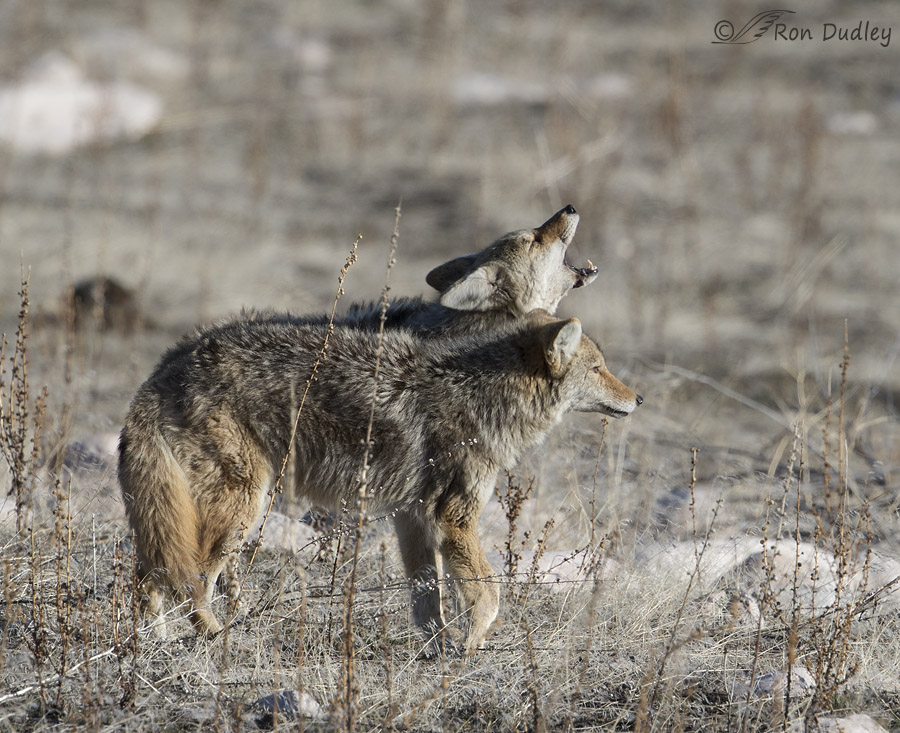
The coyote had a severe limp and normally put very little weight on that foot but as you’re about to see, when forced to run the animal endured the apparent pain/discomfort and did put significant weight on it. I don’t think that could be done on a fresh injury like this. I believe the lower leg had been broken in the past and then healed in a deformed manner.
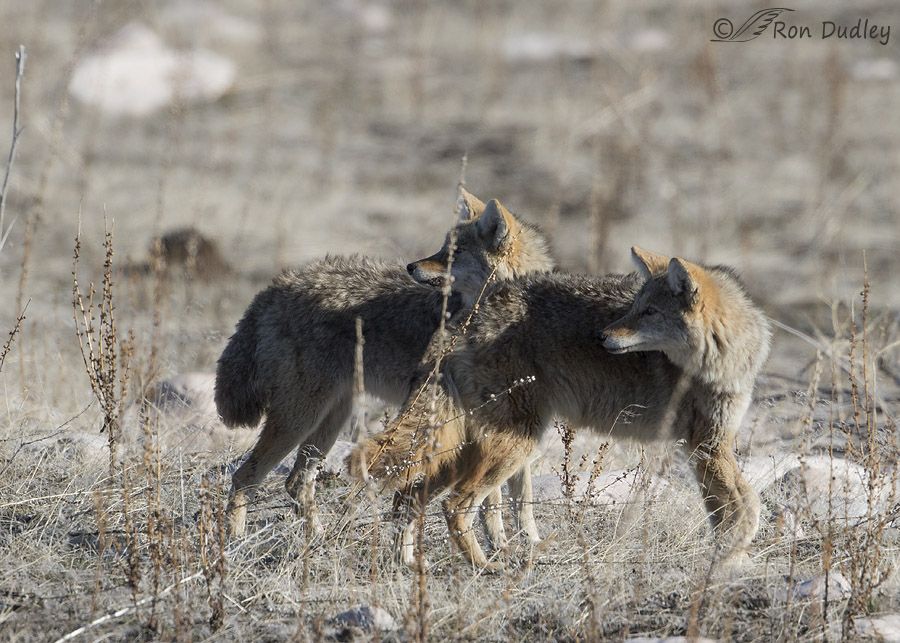
Soon both coyotes looked directly toward the third animal several hundred yards away and…
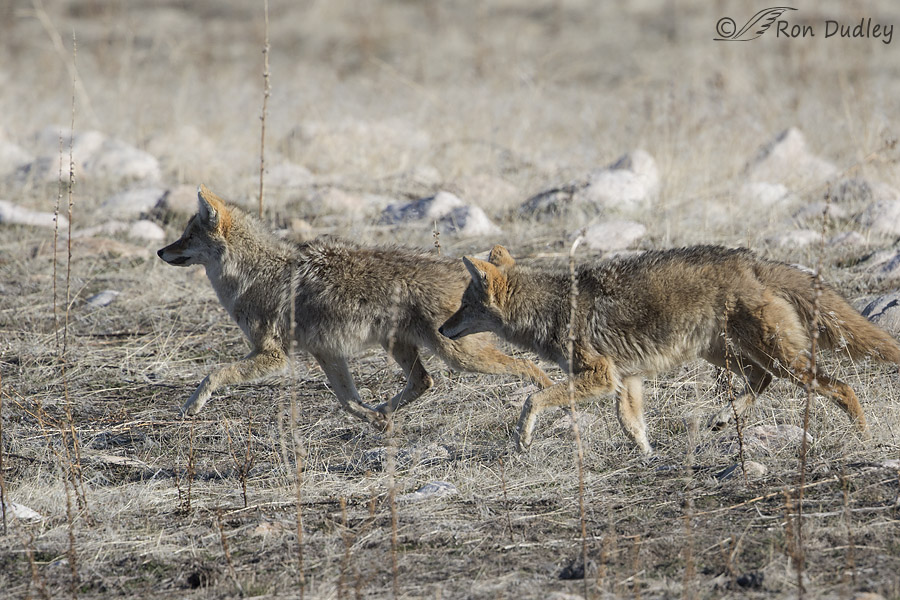
took off after it once again.
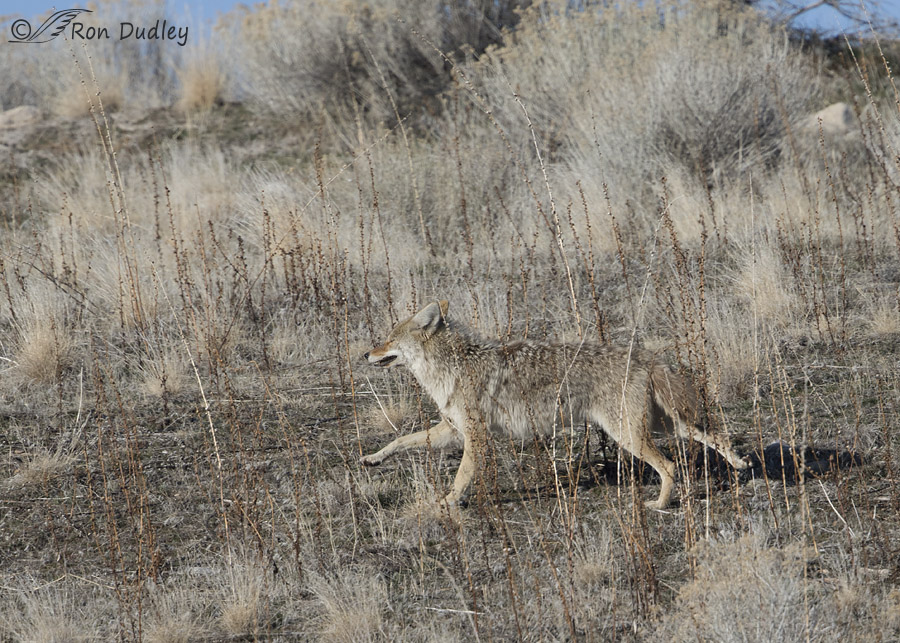
This is the coyote they were chasing.
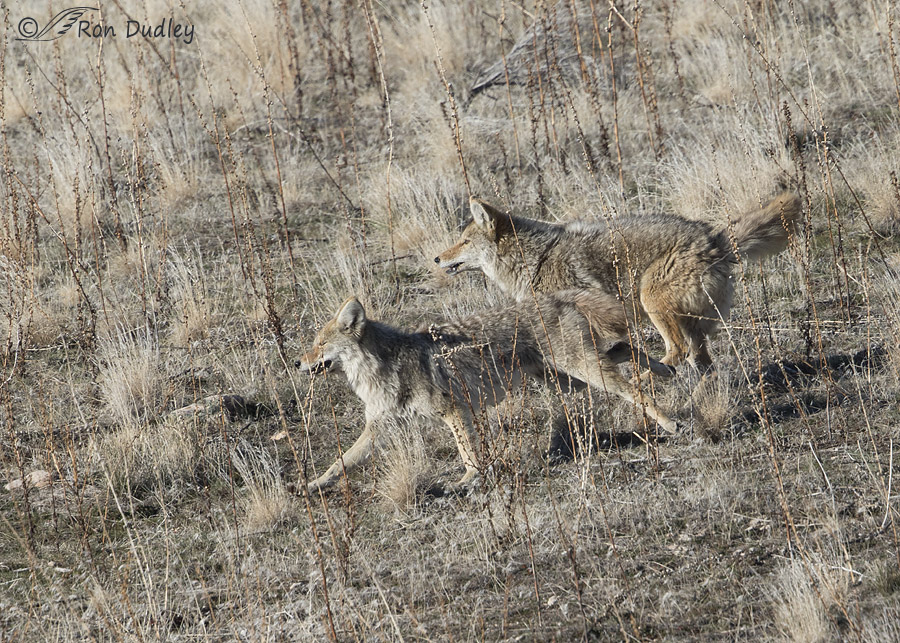
This was a sustained chase and I’m confident there would have been serious mayhem if the pair had caught the interloper. But they didn’t.
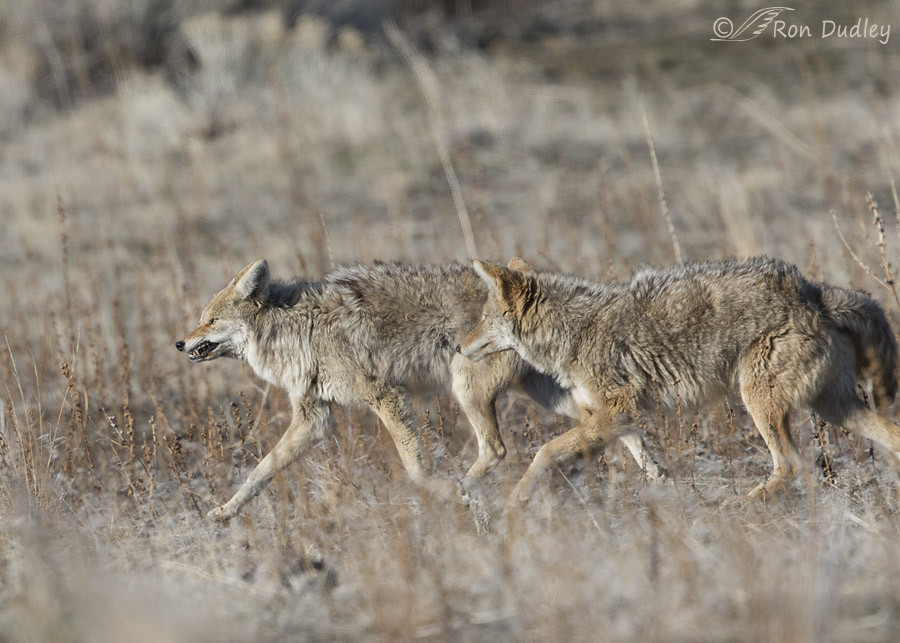
I believe that the aggressive pair was slowed down by the injury and that the uninjured animal was careful that it didn’t outpace its mate and catch the interloper in a “fair” fight. At one point, in apparent frustration, the healthy coyote showed its teeth to its mate, then snarled…
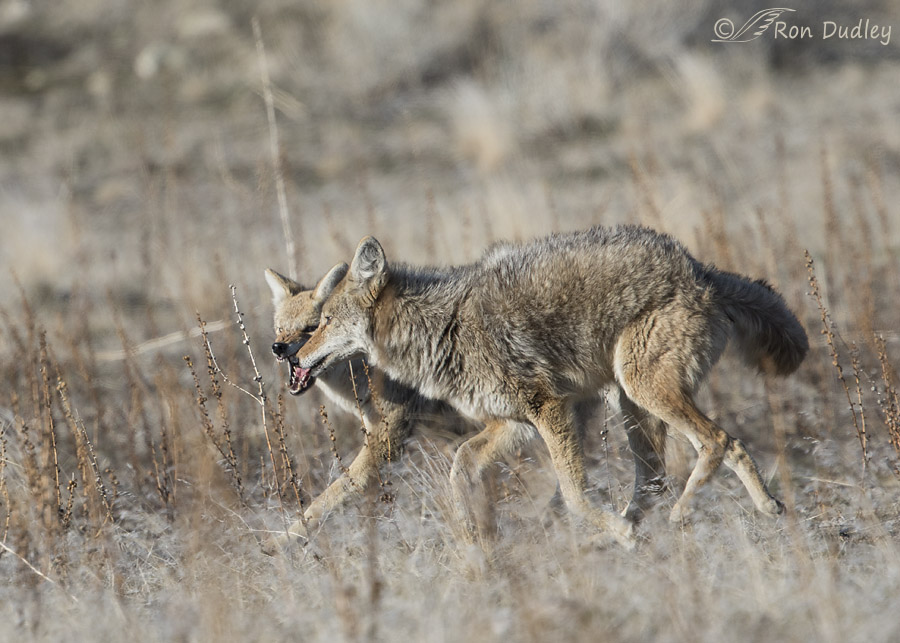
and snapped at him/her.
By this time the third coyote had apparently made its escape and all the commotion had attracted other wildlife watchers. Since I don’t play well in a crowd I left the area. Of course I don’t know how this coyote was injured – there’s many possibilities but one of them is that it was injured in a fight with another coyote.
But the most gruesome coyote injury I photographed yesterday was along the causeway as I approached the island earlier that morning. If you’re squeamish about animal injury I’d suggest that you avoid scrolling down to these last two images. I’ll leave extra space here so you can avoid seeing the photos if you choose to do so.
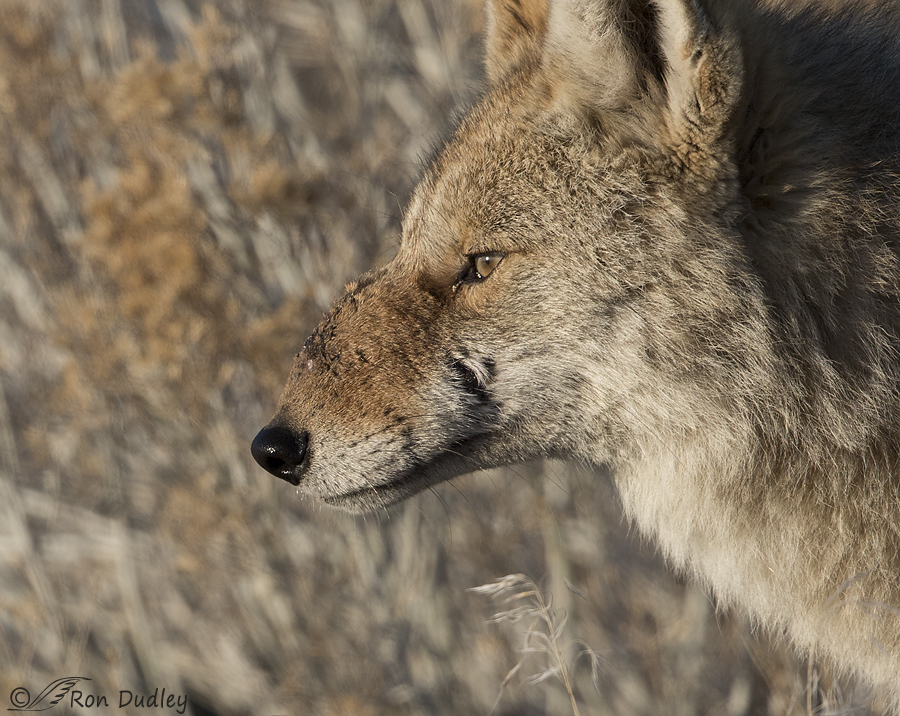
This coyote and its apparent mate were working their way east along the south side of the causeway when I encountered them so I had a difficult time getting light on the injury but here you can see that the top of the snout is grossly swollen (compare its shape to earlier photos above).
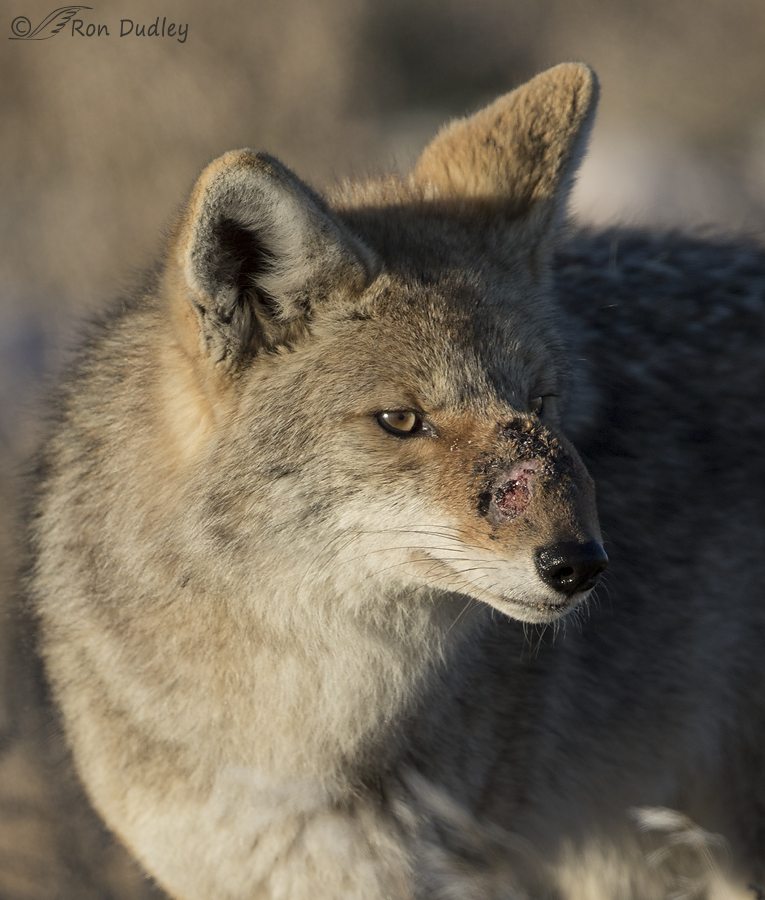
When the poor animal turned its head the reason for the swelling became apparent. I strongly suspect that this injury was caused by an aggressive encounter with another coyote. This animal’s behavior seemed to be normal and I have hopes that the injury will heal and the coyote will survive. You can be sure that I’ll be watching for it in the weeks to come.
Ron
Note: It’s the philosophy of park managers to let nature take its course in such instances so rescue/rehab isn’t an option for this injured coyote. Personally, I agree with that philosophy in cases like this.


Hi, Ron, I clicked to this story after seeing your most recent update of the injured coyote. Thank you for following up! After witnessing the brutal injuries you tend to see at wildlife hospitals, my ethic toward wildlife became an adamant, “first do no harm.” When you understand just how difficult their existence is, contending with natural forces alone, the idea of introducing deliberate duress through human activity is simply unfathomable to me. And like you, I always root for the underdog (or under-song-dog, as it were).
Very interesting narrative and photos.. I really empathized with that coyote’s pain in the last two. I am wondering if the pairs are getting close to breeding time and thus territorial.
A stark reminder that when we photograph Nature we are documenting life taking place. This type of struggle goes on 24/7 and the vast majority of humans remain oblivious to the horrible beauty. Perhaps that’s best. Otherwise we’d be awash in more rules and regulations than we already have trying to make “life” more tidy.
Terrific sequences of images, Ron!
Ron -First off your series of the bonded pair in the midst of a chase is absolutely amazing. Your photos tell a wonderful story on their own but accompanied with your narrative puts them over the top. Second, I concur with the position that the rangers take in regards to injured wildlife. It is after all wildlife, they’re not captive or educational specimens. If they weren’t in a place where humans interact with them they wouldn’t be candidates for rehab. It is a hard thing to see injured wildlife but we have to know when not to put human emotions into a situation. These are some of the best images I’ve ever seen of coyotes.
Thanks very much, Cori. And I appreciate your position on injured wildlife.
Are you familiar with those huge metal plates they use during road repair? Sometimes I have to picture dropping a couple of them around my heart so I can handle painful images. I wonder how you and Mia do it…such images are so difficult to erase…would be nice to have our own “delete” buttons, wouldn’t it…..
Things like this are hard to witness, Patty, but to be honest I have an even more difficult time when the trauma/injury/suffering is man-caused.
Great shots Ron. That nose has got to hurt! Now that it’s breeding time we can see just how seriously these guys take it!
You’re right, Larry. The social pressures certainly ratchet up for coyotes this time of year
Beautiful series of beautiful animals. Seeing the injury in the last two photos sent an unpleasant sensation through my body. But I think we need to understand how brutal life is for most animals, and those shots help in that regard. I, too, hope that the injury heals successfully.
Susan, seeing things like this makes me wonder how many of them perish from a variety of traumas that we never even see.
Hard to look at but it is the law of the wild. Thanks for an educating series yet again.
Thank you, Arwen.
Many thanks for this post. We humans, so often, have an insulated view of wildlife and their interaction with other wildlife/their own kind, it is refreshing to see a series of images that show how it really is! Yes, we will see a predator take prey, but interaction between their own kind for turf rights is not often shown. Again many thanks! The name of the game is survival and we all will do our best to survive whatever the conditions.
Dick, the more I observe coyotes the more I’m aware of some of the social pressures involved with their hierarchy. Lots going on there that most folks miss (including me of course).
Are these leg injuries caused by traps?
No, they’re not, April. Trapping isn’t allowed on the island, it’s a state park.
Saw this critter, also, yesterday. He was eating something fairly aggressively. I think that is probably a good sign given the nature of the injury. Not a pretty sight.
Overall it seemed healthy enough and appeared to act normally, Joe. I do hope it recovers quickly.
We saw a limping coyote along the causeway on Tuesday Feb 10th. Wonder if its the same one? It was alone.
Maybe, maybe not, Richard. Leg injuries are very common among coyotes. It’s not unusual for me to see more than one on the same day.
I hate to see injured animals…always makes my heart ache…especially injuires caused by human interference, abuse or neglect. It must often be very harrd on you and Mia to see this kind of suffering and know there’s nothing for you to do…
Exactly, Patty. It’s not easy to see this kind of thing up close. There’s been a bison bull with a broken leg on the island for about four years now and every time I see an injury like this I think of “Old Gimpy” and wonder if he’s still out there. I haven’t seen him for months but it’s a big island and he could still be out there surviving. The older I get the more I root for the underdog, especially the old ones…